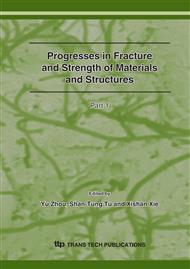p.615
p.619
p.627
p.631
p.635
p.639
p.643
p.647
p.651
Research on the Effect of Entry Angle and Pressure-Pad Force on Deep-Draw Thermo-Rheological Forming of a TC1 Ti-Alloy Sheet
Abstract:
Numerical simulation can be successfully applied to evaluate product manufacturability and predict, while material wrinkling and splitting are associated with entry angle and pressure-pad force during sheet metal stamping process. In this paper, the influence of entry angle and pressure-pad force on deep-drawing thermal forming of TC1 titanium alloy was analyzed by using explicit dynamic finite element software STAMPACK, two kinds of main invalidation, including wrinkling and splitting, and obtained that the entry angle is an important factor for deep-draw thermal forming. By analyzing the forming operation and optimizing the entry angle and the pressure-pad force of the die, the best range of the entry angle and the suitable pressure-pad force without wrinkling were obtained and splitting phenomena were controlled effectively. The researched results of numerical simulation provided some parameters for die design.
Info:
Periodical:
Pages:
635-638
Citation:
Online since:
September 2007
Authors:
Price:
Сopyright:
© 2007 Trans Tech Publications Ltd. All Rights Reserved
Share:
Citation:


